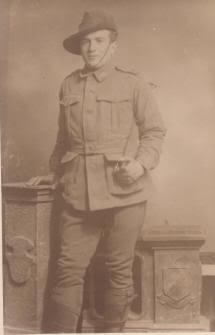Norman Myer

Norman Myer. Photograph courtesy of Nick Myer.
Nahum Myer, known as Norman, was born in a market town with a large Jewish population, near Tatarsk in Belorussia, part of the Pale of Settlement in south-western Russia. His father, a merchant, died when he was six months old.
At this time, traditional Jews living in the Pale of Settlement were subject to discrimination, persecution, and oppressive restrictions that led to much of the Jewish population immigrating to other countries. Norman’s uncles, Simcha (Sidney) and Elcon Myer, who were living in Melbourne, provided the funds for Norman to travel to Australia when he was 12 years old. He arrived in Melbourne in February 1909 on board the ship Friedrich der Grosse (Frederick the Great).
As a secondary student at Wesley College, Norman and his Uncle Sidney (who founded the Myer Emporium with his brother Elcon), discussed how Norman would study accountancy in London and New York, and then return to Australia to work as the head man of the Myer department stores.
However, Norman’s career was put on hold when he enlisted in the Australian Imperial Force in June 1916. Not yet a naturalised British subject, 19-year-old Norman enlisted as a Russian citizen. He sailed from Melbourne with the 5th reinforcements of the 8th Field Artillery Brigade on board the troopship Ulysses in October 1916. On the long, dull, voyage to England, Norman took part in boxing matches and won the ship’s championship, having excelled at boxing in his school days. By December, he was based at Larkhill training camp on Salisbury Plain in England.
Norman was posted to the Reserve Brigade Australian Artillery and in August 1917 was sent to France to serve in the First Divisional Ammunition Column. He served on the Western Front as a driver and then a gunner, firing the 18-pound field gun. These guns, and other artillery, were responsible for the devastation of the landscape of northern France and Belgium.
There was occasional respite from action. In March 1918 Norman took leave in Paris. Looking at the shop windows in the boulevards gave him ideas for the family business back home in Australia.
At the time of the armistice, Norman was training at the Royal Artillery Cadet School at Preston in England. Now a lieutenant, Norman took further leave from January to July 1919 to study silk manufacture in London.
The following year his army appointment expired. Norman had come through the war physically unscathed, and soon after his return to Australia he became a naturalised British subject.
Norman then started work at the Myer Emporium’s Bourke Street store and learned every aspect of the business, from lift driving and floor sweeping to parcel wrapping, docket writing and merchandising.
He ran different sections of the store in Melbourne and went on to manage the Adelaide store in 1927. After his Uncles Sidney and Elcon died in 1934 and 1938 respectively, Norman took over the company. Over the next 20 years he made Myer one of the five most successful department stores in the world.
The Sidney Myer Charitable Trust was formed after Sidney’s death, and managed by Norman. It funded charitable and cultural projects, a practice which his Uncle Sidney had begun, to give back to the community where he had made his fortune. Construction of the Sidney Myer Music Bowl in Melbourne was announced in 1956, the same year that Norman was knighted for his public and philanthropic services. He donated money to community organisations, and was also active in the Australian Red Cross Society and the Australian Comforts Fund.
Australia was a country where Norman and his uncles flourished, free from the restrictions and persecutions imposed on those of Jewish heritage in their native Russia. In December 1956, Norman lost his battle with cancer. His obituary remarked that Norman was known as “Australia’s biggest shopkeeper”. The Myer department store chain remains a successful family business today.